Pernille Ripp's Blog, page 18
July 23, 2019
Starting With Writing Identity First Rather than Writing Skills
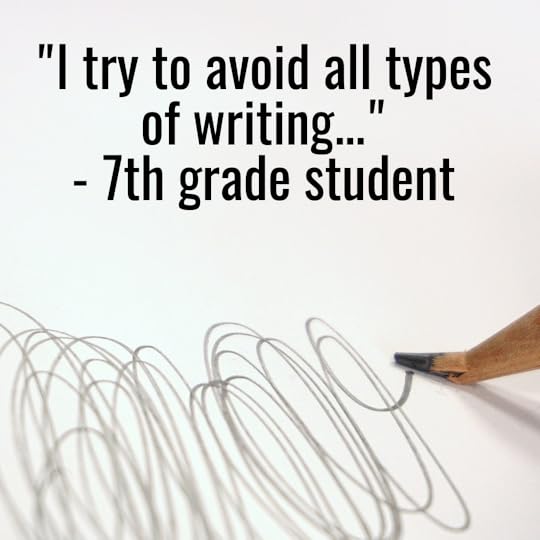
As I plan our first exploration for the coming year, one that dives into personal essays, I have been thinking about the writing experience itself. About how personal it is. About how draining it can be. About how asking a child to write is really asking them to trust us enough to show off where they need growth. The emotions attached to writing are often overlooked and yet how many of our students will gladly tell us how they are not writers, or at least not good writers? Now many of my students can technically write. They can produce stories that make sense, that use appropriate vocabulary, that move the action along, that convey a meaning or an idea. They can do the writing, but they will tell you quickly, loudly, that they are not writers. This is despite the stellar teachers and experiences that come before them entering our classroom. This is despite the powerful curriculum and experiences put in place in order to help students develop their writing repertoire so they can feel comfortable.
And yet, the same story plays out every year, perhaps it does for you too, classrooms filled with students who groan at the mention of writing. Who tell me they will never use writing for anything outside of school. But it doesn’t match up with what we see; their urgency to tell stories through the social media apps that they use. Their animated conversations as they hurry up to one another, eager to share what just happened. The many students who invest in the world at large, become emotionally engaged with the stories that surround us, I see them interact with writing so much, and yet, if you were to ask students how many of them would find value in writing beyond the grade? The process? The box checked off and onto the next assignment?
So I have been thinking about the rush we feel to get started with skills. With how we plan our units in order to teach as many practical components in order to equip students with the technical know-how they need to produce good writing. With how we plan our first writing unit in terms of what the end product should be to show mastery of skills rather than focusing on the process to see growth not just as a writer but also as a person. I get the urgency to start; education seems to be a race we are all failing at keeping up with, but I wonder at what cost to developing a writing identity does this rush to get started with skills produce in the long run?
When we fail to discuss the identity as writers that students bring with them into our communities, are we really providing students, kids, with a chance to see themselves as writers beyond the classroom?
Can we affect long-term change if we do not recognize the emotions attached to writing and what it means to write at school?
A main focus for me for many years has been the development of reading identity, this is what I teach others to do and what I often share about here. I have been proud of how our students have invested in this work, and yet, I have failed to transfer that work in a meaningful way over to the process of writing and being a writer. While I have used surveys to discuss their writing identity, I have let it fall off the radar, lost in all of the to-do’s. I have failed to create a community where writing identity is seen as important as writing skills. And I think it has been one of my largest missed opportunities.
But not anymore, not this year. This year, we are slowing down. We are starting with an exploration of what it means to write, notice I didn’t say write well, because language matters and sometimes weighted language is all a child needs to remove themselves from the promise of growth. We will focus on what it means to be a writer, on the language that surrounds us as we see our own writing identity. Each day will have a specific discussion point as I slowly, hopefully, build trust within our community to share the emotions or experiences attached to writing.
It will start with a survey after we have discussed why writing sucks and when it doesn’t, a opportunity to set a writing goal, it will continue with chances to play with writing rather than the immediate focus on a product, instead using their writer’s notebooks to try different prompts (with a permanent option to write whatever they want ) as they read powerful essays we have collected to hopefully show them that writing doesn’t have to follow all of the same rules and that there are many different ways to write.
Slowly, hopefully, we will have conversations about the value they want to find within their own writing. On the worth they want to place on their own stories, their own communication.
Will it be enough? No. But it will be a start. A start to something better for me where the very identity of the child that is entrusted to us is at the center of the work, not just the skills, not the program, not the finished product, but the child itself, as much as they will allow it. A start to the yearlong identity work we do as inspired by the Social Justice Standards created by Teaching Tolerance.
Writing is something so many adults don’t do because we feel like our words have no place being shown and shared with others. Even now as someone who has written four books and had them published, as someone who has written publicly for more than 9 years, I still don’t feel like I get to call myself a writer. And I want to change that.
I hope our students will find some sort of value in the work that we will do beyond “the teacher told me to do it…” I hope that by making intentional space for conversations about who they are as a writer and how they want to grow, embracing both the positive and negative aspects of writing identity, will allow us for a more meaningful overall exploration of writing. Lofty goal? Sure, but we have to at least try.
If you like what you read here, consider reading my newest book, Passionate Readers – The Art of Reaching and Engaging Every Child. This book focuses on the five keys we can implement into any reading community to strengthen student reading experiences, even within the 45 minute English block. If you are looking for solutions and ideas for how to re-engage all of your students consider reading my very first book Passionate Learners – How to Engage and Empower Your Students. Also, if you are wondering where I will be in the coming year or would like to have me speak, please see this page.
July 15, 2019
Space
I have been thinking a lot about space lately.
Not the kind that surrounds us on a dark night, but the kind that surrounds us as individuals.
Perhaps it is because I have been flying more and as a woman, I constantly find my space taken by white men sitting next to me, refusing to even share an armrest. I am so used to it, I have found I slip into patterns to make myself smaller in order to not encroach on their space.
Perhaps it is because in my thinking work this summer I keep coming back to how white my professional space is within my district, reflective of the lack of diversity of so many districts here in Wisconsin. How can we change this to be reflective of the kids we teach?
Perhaps it is because I see the critical conversations surrounding education online and how often it is silenced because people say we need to speak nicely to each other, to not make the space unwelcoming or unkind. We use these platitudes so often to silence the voices of those who have been silenced for so long that we fail to recognize the same destructive patterns.
Perhaps it is because I see my own daughters apologize for the space they take up at times as we remind them to be nice, to be kind, to speak appropriately, whatever that may mean. Even as I cringe when the words slip out inadvertently, taught to me by many years of public socialization where we are taught which type of women should be heard in this American society. And I can tell you from experience that the minute you raise your voice, you are deemed angry as if anger is a bad thing.
Perhaps it is because I feel like as a white woman I am often afforded more space because of my skin color than I really deserve.
Space, and how much space we are given, seems to be crowded with well-meaning intentions and misguided constraints. Space and what we do with it also seems to be dictated by those who feel their space encroached upon and who must make a decision of whether enough there is enough space for us all. (I think there is, but that is for a different time.)
I think of space when it comes to our students, how for years I have discussed student voice on this blog and how I have attempted to create an environment where students can speak up no matter what they are saying. How for a long time, through my personal reflection, I have implored others to give students’ voice without recognizing the inherent problem in that statement; students already have a voice, they come to us loudly, yet, it is within our pursuit of calm and compliant that we silence them for the benefit of “learning for all.” And so I come to the natural conclusion that my work is not about giving students a voice but instead about space and more specifically, giving them back the space we took from them in the first place.
And that starts with the very first day, the inequity of our voices as we go through our day with kids we don’t even know. How many of us talk about those first days as exhausting because our voices are constantly heard? How many of our students feel drained not because of all that they had to do but instead all they had to listen to? How many of us plan out to the minute what we will be doing in order to “Set the year up right” without a care for how welcome or even safe students may feel in our rooms? Perhaps what we need is a little bit of silence, more them than us, more we than I.
So as I plan for those first of many days, I am thinking about the space of my voice. The space of me within the room and how it needs to be balanced with the space of others. How I need to think of my voice, the adult voice, as something that also takes up space and therefore needs to be weighed in order to give back space to others. And not just in the classroom, but in life. After all, we get one chance to start off right with these new kids, why not get our priorities straight from the get-go?
If you like what you read here, consider reading my newest book, Passionate Readers – The Art of Reaching and Engaging Every Child. This book focuses on the five keys we can implement into any reading community to strengthen student reading experiences, even within the 45 minute English block. If you are looking for solutions and ideas for how to re-engage all of your students consider reading my very first book Passionate Learners – How to Engage and Empower Your Students. Also, if you are wondering where I will be in the coming year or would like to have me speak, please see this page.
July 13, 2019
These Kids, Our Kids
She tells us that she is not smart. That school is not a place she wants to go to because that’s where all the smart kids go. The ones who can read. The ones who can do things so much easier than her.
She shows us that she is trying. That every word that sits in front of her is a mountain to be climbed, seemingly no matter how many times she has seen it before, the climb is still there. The doubt is still there. The wanting to give up, because “This so hard, Mommy..” and we tell her to sound it out, to try again, to see the letters, even as they move and squiggle and run away from her eyes as she tries once again. Everything taking twice as long as her twin brother. Everything coming at a price of time that seemingly no other child has to give up because to them it just comes easy.
So we search for answers, for teachers who see the girl before they see the problem, for others who like us, sit with a child where reading does not come easy. Where reading is not a magical adventure but instead dreaded work that doesn’t bring happiness but only affirmation of her supposed lack of can. And we get the doctors involved and they tell us their diagnosis and I cry in the meeting because wouldn’t it have been nice if it wasn’t a specific learning disorder but instead just something that hadn’t clicked? Wouldn’t it have been nice if we had it all wrong and she had us all fooled? Wouldn’t it have been nice?
So we sit down with our little girl, who really isn’t so little anymore, and tell her that we did get answers and as we thought it turns out her brain just learns differently. That reading is, indeed, hard to figure out but not impossible. That now that we know more, we can do more, we can get help, we can get support, and we can go in the right direction rather than searching in the dark hoping for something to help us. We can tell she doesn’t believe us, not yet, anyway.
And as summer unfolds, we hope that having this time can give us the time we need to build her back up, not because anyone tore her down, but because this mountain of reading has been telling her for too long that she is not as good as she thought she was. And once those whispers started they were awfully hard to drown out when the proof is right there in front of her on the page.
And I think of how the systems of school play into this self-evaluation. How the grades and the labels so often harm. How we, as educators, sometimes confuse good grades with dedication, as if a child who is failing a class isn’t dedicated? As if all a child needs is to just work harder, or hard enough because then the learning will surely come, and how for some of our kids, that is simply not true. That I can see my child work hard. That I can see my child stay at the table longer. That I can see my child give her best every single day. That I can see my child get extra teaching, tutoring outside of school, and yet the results don’t come because it turns out that hard work doesn’t always equal results.
And these kids, our kids, who are behind are often the ones working the hardest if we really had to compare.
And these kids, our kids, who are behind are often the ones pulled out of recess and fun activities in order to go work more.
And these kids, our kids, who are behind are often the ones given fewer opportunity for choice because it turns out that when you need extra support we have to cut something out of your schedule.
And these kids, our kids, sit with the same kids year after year, traveling as a group because the only thing we have identified them by is their lack of ability.
And these kids, our kids notice.
And these kids, our kids, know it.
And these kids, our kids, feel it.
And these kids, our kids, slowly start to take on the new identities we have created for them in our data meetings, in our hallway conversations, in our quick meetups when we make our lists, where we make our groups, where we share the stories that we think define these kids.
And these kids, our kids, are honored for their efforts by being given new names; struggling readers, lower level learners, behind, and you wonder how they lose themselves in the process.
And you wonder why one day, despite our best intentions, they tell us that they don’t think they are smart and that they don’t want to go to school.
So as my family once again adjusts itself in our pursuit of learning for all. As we celebrate the answers we have been given this week while nurturing the child who is at the center of it all, I ask you to please consider this. My child, our daughter, is not a struggling reader, she is a reader. Period. To tell her otherwise would break her heart.
And so these kids, our kids, deserve to be fully spoken about, to be fully known. For us to start a conversation asking how they see themselves and if it is through a negative lens we actively fight against that. And we tell them we see their effort, we tell them we see their progress. We tell them we see their smart, and we stop with the labels, and the assumptions, and we see the kid for who they are rather than what the data tells us.
Because this kid, my kid, doesn’t think that reading will ever be something she can do, and I need, she needs, everyone that works with her to believe otherwise and loudly, because my voice is not enough.
Please.
July 12, 2019
Getting to Know Our Students Survey
Every year, I do several surveys at the beginning of the year, I don’t think I am the only one. As we try to get to know these kids that have come into our lives, I think it is so important to gather as much information as they are willing to tell us in order for us to be better teachers for them. But I also think about how hard it can be to answer questions those first few days of school when you don’t really know what your answers will be used for, when you are not quite sure who this person is who is asking you these questions, when you are perhaps not even sure what the questions mean.
So this year, I am changing my approach a little bit. The questions have been changed to be more of a progression of trust, not because I am under any impression that from Tuesday to Friday the students will trust me, but because I want to honor the relationships we are building and the fact that they take time. Students will be asked to answer a few questions every day, but can also choose to speak to me about these things. They are focused more specifically on what the child needs from me potentially to be successful and not so much on academics. Students will do a separate survey every day, while not ideal, it will allow me to see their answers as the week progresses and then create one answer froup per student at the end of the week.
Along with these questions, I will also give my reading and writing surveys during that first week. Those will be on paper as I place them in my conferring binder alongside the notes I take during our conversations.
Before the children have shown up, we will also have asked those at home about them. We want to reach out to parents and caregivers as experts on their children and honor the knowledge they have through a home survey. It is sent electronically before school starts and I respond to each person that takes it with follow up questions, those who do not have access to email or choose not to take it online are handed a paper version once school starts.
While the first-week surveys are not done, I am sharing here in order to receive feedback. What have I missed? What have I misworded? What would you add or remove? You are more than welcome to make a copy and make it fit your students, just please give credit. To see the surveys, please see here:
Tuesday – Go here
Wednesday – Go here
Thursday – Go here
Friday – Go here
Thank you to those who have already helped me make it better, here are all of the questions together.
If you like what you read here, consider reading my newest book, Passionate Readers – The Art of Reaching and Engaging Every Child. This book focuses on the five keys we can implement into any reading community to strengthen student reading experiences, even within the 45 minute English block. If you are looking for solutions and ideas for how to re-engage all of your students consider reading my very first book Passionate Learners – How to Engage and Empower Your Students. Also, if you are wondering where I will be in the coming year or would like to have me speak, please see this page.
June 29, 2019
What Parents Wish We Would Ask their Child
Yesterday, I asked a question on social media, a question I have asked before. A question that has been rolling around in my head here in Costa Rica as I dream of the year to come.
[image error]
While responses continue to come in from around the world, I am struck by the urgency so many of the questions are wrapped in. An urgency that speaks to the hopes and dreams, and yes, sometimes fears, that I also share as my own children inch closer to a new year with new teachers.
See my child as the gift they are.
See my child for how hard they try.
See my child for all they are and not just the decisions they may make in their low moments.
Give my child a way to let you know who they are, what they believe in, what they dream, and what they fear.
Get to know my child beyond the data, beyond the rumors, beyond the assumptions that they may be wrapped in due to society, due to the past, due to things outside of their control.
Take the time to be someone in their corner, someone that they know will have their back, someone they know will fight for them and believe in them.
Partner with us, those who send you the child, so that we can be a part of their journey, because it is hard to believe our child is welcome in your class, in your school, if we don’t feel welcome as well.
Get to know our child beyond the basics and have them get to know you as well.
But also, take you time. Don’t expect our child to trust you right away. Earn their trust, earn our trust, through your actions and not just your words. Be a champion and admit when you are wrong, help us connect with you as you connect with our child. Because it hopefully goes without saying, I send you our hearts every day, please take care of them.
To honor the time it takes, I will use questions throughout the year not just the first day or first week. I will continue to ask students many of the ones shared spaced out over time in order to recognize that relationships, real ones, take time and that the answer a child gives me the first week will, hopefully, deepen as we get to know each other.
Finally, for me, I want to honor their history and their home. As an immigrant myself, my biggest identifier is being Danish, and yet for my children they are assumed fully Americans in their schools, even though they are designated ESL, there is little with care or even curiosity to the identity they share with me, the threads that we weave throughout our home and family. So I want to continue to work on creating a space where all of students’ identifiers and heritage is understood, honored, and developed.
So what would parents like us to ask their child, here are a few of the many tweets, to see them all, please go to the thread, it is absolutely worth your time.[image error][image error][image error][image error][image error][image error][image error][image error][image error][image error][image error]
And so now, I ask; what do you wish your child’s teacher would ask them as a new school year begins?
June 20, 2019
The Teachers Tell Us…
A reflection…
Working through my keynote for this morning and I keep coming back to this moment from my own students – I asked my students who the “bad” kids were and they answered, “The teachers tell us…”
Even though I was there to witness it, it still hits hard every single time I see it. The power we wield, as educators, as adults, in how human beings see each other is astounding. It is something I carry with me every single time I teach, that through my actions, whether conscious or not, I will shape how a child’s humanity is potentially seen by others. While not singlehandedly determining the narrative, my presence, my being will provide others with a road map of how to see themselves and others.
It is something I don’t feel we spend enough time discussing, pondering, and helping us shape our teaching experiences.
And it starts on the very first day where we explain through our rules what “good kids” do and a child looks at that list and doesn’t see themselves.
That quote is 5 years old and yet, I wonder how many kids would still say something like that in schools across the world.
How many kids would consider themselves “bad” kids because that is the legacy we make for them?
Or how we label entire grade levels as “hard” groups or other awful titles and then wonder why they live up to it?
Words matter, actions matter, and the way we help children shape their identities in school to the point of where some are trying to succeed despite us is something to sit with, and then something to do something about.
Because as the mother of a child who felt unsafe at school due to bullying, who felt her teacher hated her in kindergarten, that was exactly the legacy she thought she should live up to. A child who didn’t belong, who was angry, who was broken.
And as a teacher who continues to screw up, despite her best intentions, I have realized that the least I can do is ask the very kids I teach whether they feel safe and respected and if they tell me no, then do something about it.
Because then, perhaps, we can change the narrative.
June 18, 2019
Chasing Happiness…
For a long time, I have kept a journal, well, let’s be transparent here, not a journal, but a long-standing to do list in a journal form. What started as a commitment to keep a bullet journal has morphed into my own version of my life in a book, with plenty of boxes to check off daily, and also main points of the day. My husband provides the journal, painstakingly researching the ones with the best paper and presents them with pens whenever a chance affords itself, I am lucky like that.
Every morning, while my computer boots up, I pull out my leather-bound journal and make the day’s to do list. A quick brain dump as I think of tasks big and small that need to be completed in order for my brain to change focus and be present when I get home. Sometimes on Sunday’s I make my list for Monday in order for myself to continue to focus on home rather than school as the weekend ends. On the days, I feel disorganized and off it is often because I haven’t taken the time to make my list. On the days I feel more stressed and scattered, the same culprit is at play.
After the to-do lists comes the second part of my ritual, a simple list on the previous day’s page titled “Happiness is…” In the quiet morning hum of my classroom, under the covered fluorescent lights, I try to take a moment to remember all of the happy moments. The ones that brought me peace and happiness that previous day.
This year for my word of the year I chose the word “More.” More love, more joy, more slowing down, more meaning, learning, more great food, naps, and everything that makes life truly worth living; more family, friends, and people who inspire me. More of the good things balancing out the to-do’s and the must do’s in order to be a responsible human being.
And I embraced the pursuit of more, I still do, but I also quickly noticed that my happiness list was dwindling, that in my eagerness to do more, I ended up working more to get more done, to be more productive, and so there weren’t many true happiness moments beyond the big events that stood out. If you looked at my happiness list, you might think I lived a sad life, and yet, that short list also became my realization that perhaps there weren’t as many happiness moments as one might expects but not in the way one might expect.
Because there is nothing wrong with my life, instead, my lens was foggy. I looked for true happiness, that elusive feeling where the world stands still and you get that this moment, this very moment you are in, is of importance. It turns out we don’t have many of those if we compare our lives to others. We don’t have many of those if we are too busy to-doing and not just to-being. What we do have is small moments of joy sprinkled throughout our daily life that we seem to skim over in our task-slaying ways.
So this summer, all four days of it so far, I have been chasing happiness. I have been making my to do list in order to have more moments to add the next day. I have added my yoga, because it makes me feel better, I have added my bike rides with my children as they are all out of training wheels and the world beckons for our exploration. I have added the quiet nights with Brandon as we watch in wonder Good Omens and the illustrious story-telling. The chocolate, the great books – so many great books – the sunlight, the naps, the phone calls and contacts with friends, the pool time, the compliments, the great learning from others. The ideas I am collecting from the learning I am doing that I know will create better learning opportunities for all of my students. I am looking at my own deficits in understanding and not seeing them as faults but instead as a learning opportunity. How wondrous it is that we can learn so much from others and in turn become more than what we were? I am planning for these because it feels right, it feels good, and don’t we all need a little more goodness in our lives?
And so my list is fuller and so is my life.
I know, that life will get filled up again, it always does, but chasing happiness in the form of meaningful interactions is something that will always be worth it. To seek out opportunities that will bring you joy is never wasted, unless the joy is at the expense of other people. I know I can become more than I am due to the teaching of others, due to the time with my kids, due to the meaning I choose to add to my life and pursuits. That is on me, that is my mission. And I can channel that into the teacher I am, that teaches with purpose, with an eye on changing the very experience we have together in order for the children to have a better chance at their happiness pursuit. If, in the moment you are in, there seems to be little joy, ask why. Is it beyond you, because let’s face it, life can be cruel at times, we certainly have already navigated some difficult situations in the last few weeks, or is it just your lens that needs to change?
Only you can fully answer that, but perhaps a list is in order. Won’t you chase happiness with me?
If you like what you read here, consider reading my newest book, Passionate Readers – The Art of Reaching and Engaging Every Child. This book focuses on the five keys we can implement into any reading community to strengthen student reading experiences, even within the 45 minute English block. If you are looking for solutions and ideas for how to re-engage all of your students consider reading my very first book Passionate Learners – How to Engage and Empower Your Students. Also, if you are wondering where I will be in the coming year or would like to have me speak, please see this page.
June 14, 2019
On Blind Spots and Doing Better When We Know Better
Three years ago, I wrote a blog post detailing my journey with the book When We Was Fierce and in particular the journey with realizing that a book I had marveled at and called a must read was being critically reviewed by others. While at first I was embarrassed by my enthusiasm and not knowing better, in the blog post I wrote about the growth I had when I put away my own embarrassment and instead approached the moment as a learning opportunity, simply put; when I knew better, I could do better. It is a journey I have tried to continue on ever since.
Since that post, I have tried to be more in tune with critical reviews. I have tried to read new or old books that come my way with a broader lens trying to step out of my own lived experience to discover how others may view a book. How others may be potentially harmed by a book. How others may have world view shaped in a an inaccurate manner because of a book. While the voice in my head has gotten better at alerting me to potentially problematic texts, it is far from perfect and it is a journey I continue to be on.
I share this because this week I published my best books of the year so far list, a list I try to carefully put together in order to help others find books that may heighten their reading experiences. It is also a list for myself to look back upon as I celebrate the incredible works put out in the world that have deepened my own children’s’ reading lives as well as my teaching experience. This morning, I woke to a tweet sent to me by a colleague highlighting a potentially problematic book on the list.
[image error]
My response: Thank you, I will definitely look into it. Which I did.
Dr. Laura M. Jimenez (@BookToss) had written detailing problematic aspects of the book Stonewall: A Building, An Uprising, A Revolution by Rob Sanders and Jamey Christoph. This book was on my best of the year so far list and a book I had really enjoyed, even contemplating how I could use it as part of our upcoming historical research unit where we will write from the perspective of an object. While I had read the book and the voice inside my head had noticed how there didn’t seem to be a broad acknowledgement of the trans community, I had put aside my concern rather than followed up on it, despite having also read the book The Stonewall Riots: Coming Out in the Streets by Gayle E. Pitman that had explicitly discussed the broad community anger and how this went past the mostly gay men present in the inn on the first night of the riots. and also received a reply from the author, Rob Sanders, which I really think you should read.
After reading the blog post, the concerns with the book were crystal clear so I pondered why I had I put aside my concerns? The answer? Because I really liked the book AND also because of my lack of knowledge. While I had a minor concern, I didn’t follow up on it and instead chose to highlight the book because I thought that it would be great for others to read. End of story.
And this is what I want to write a little bit about, because those two things, dismissing our concerns and not knowing better, are exactly why I think many, especially white, educators keep problematic books in classrooms and home collections year after year. I know the emotional attachment is what makes me sometimes try to mentally finagle a way to be okay with a book in our collection that may do potential harm. Even though I know better. Even though I end up not placing it in our library because I know better. But how often do we, and especially us white educators who live within the dominant lens, simply not know better? Or how often do we dismiss the criticisms because we somehow think that having the book will surely alert students to their own concerns and then be able to navigate potential problems within it?
But here’s the thing, if I, as a 39 -year old, educator who has taught for nearly 12 years and reads hundreds of books, as well as reviews of books, and critical discussions of books every year cannot figure out on my own that a book is problematic, then how can I expect my students to do so?
Because they won’t, not unless we teach it, not unless we discuss our own mistakes when it comes to reading and highlighting problematic texts. This is why I use the book The Secret Project by Jonah and Jeanette Winters in my classroom. While I had the book at first because I loved it and had already read it aloud to my classroom, after I read Dr. Deb Reese’s post on the problems with it, I re-visited the book with students and we discussed why we had not ourselves caught these problems with the text and instead taken it at face-value. It led to a larger discussion on what else we miss when we don’t know more, or the blind spots we all walk around with and how to shrink them.
This is why we must do better when it comes to vetting our own collections and also being okay with admitting it out loud. I know that there are a lot of emotions attached to books and their creators. I know I don’t want to hurt other people when I distance myself from their work. I know that many educators, me included, like to think that I know enough to carefully select books that will not present problematic, inaccurate, or full on harmful stories to my students, but that is simply not right. Even though I have grown and gotten better, I have so much to learn still. I will, probably despite my best intentions, continue to embrace books that because of my own lens, my limited perspective, I cannot see the problems in until others point it out.
So what can we do when we realize either through our own investigation or when someone else points out harmful representation or stories?
Say thank you when someone points it out. We cannot grow if we don’t know what we need to do better on. That is why recognizing when someone offers you an opportunity to grow and acknowledging it as an opportunity to grow rather than getting defensive is always the best way.
Get over our own feelings. Is it embarrassing to screw up? Absolutely. Would I rather do well? Sure. Do I learn from these interactions? Every time. However, when our response is one of incredulity or dismissal we are not really growing, we are certainly not focusing our energy on what we should be focusing on, which is the conversation surrounding the text or illustrations rather than our own feelings.
Read the criticism, seek to understand it, and ask questions. I always read or listen to what is being said and then try to find other voices who are discussing it as well. If I am not sure why something is being discussed the way it is, then I ask questions. That is why I love being connected to others because social media gives me a quick way to reach out.
Take action outwardly. Whether it is publicly acknowledging your screw up if you have recommended it, or spreading the word by amplifying the discussion happening, do your part. It is often isolating to be someone pointing out critical aspects so knowing that there are others who will back up your words and calls to action is powerful.
Transfer the knowledge. Teach this critical skill to students by also connecting them with book reviews blogs so that they can be adults who have access to information, so that they can notice their blind spots, and also try to see whether a book may be harmful or not. Make it a part of your already embedded curriculum units so that it is not a stand-alone lesson but instead one that is addressed in many different ways. After all, isn’t teaching critical analysis one of our main teaching goals?
Take actions personally. Remove the book altogether or use it to discuss blind spots like I have done with a few books, but do something, rather than just push it aside because “no one will know that you still have the book.” While that may be true, this is also an incredibly twisted way of looking at the process. While it feels very strange to throw books in the garbage, almost sacrilegious, yet sometimes that is where certain books belong. Don’t just say you will do something, actually do it.
Try to do better in the future. While I definitely catch more problematic books before I recommend them than I have in the past; as evidenced by this post I still have a lot to learn. All of us do. But the good news is that through social media we can easily learn from others as long as we are willing.
Finally; say thank you and support those doing the work. Thank you to those who tirelessly advocate for better representation within the book industry. Who repeatedly point out when texts or illustrations are problematic. Who take the heat that comes their way over and over again when others accuse them of being in a “mob” or even sends them death threats. Because of people like Dr. Reese, Dr. Jimenez, Edi Campbell, Ebony Elizabeth Thomas, Valeria Brown, Chad Everett and the fearless educators, authors, and activists involved in #WeNeedDiverseBooks #OwnVoices, #DisruptTexts, and #DiversityJedi I have grown as a reader of books and that matters because the books I share are used within my own classroom, as well as recommended to others on a global scale.
So what did I end up doing with Stonewall the book that started this whole blog post? I removed it from my best books of the year so far list and with the encouragement of Dr. Jimenez wrote this blog post to make my thinking visible. While I love the missing parts of history that the book represents, I cannot use it as an actual representation of what happened that night, there is too much missing.
And that is where I start my summer vacation. Knowing that I have so much to still learn about others and from others. Not a bad way to start my summer as I try to grow as a person and as an educator. I now know better, so hopefully I can do better. Can’t we all?
The Global Read Aloud and Literacy Curriculum
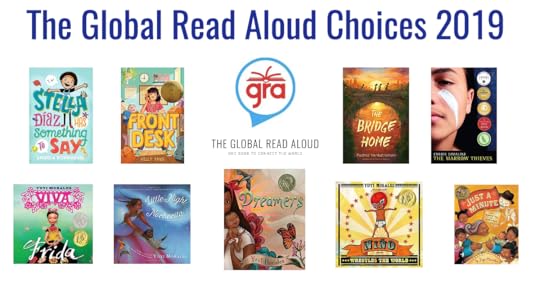
One of the most common questions, I receive in regard to the Global Read Aloud is how, and whether, it integrates into a pre-existing literacy curriculum. Is this project merely a fun add-on or is there actual academic value in it that can be defended in case it needs to be?
While there would be little wrong with the program if it was “just” a fun add-on, the answer is that; yes, the Global Read Aloud has academic value, and not just for the students, but for the teachers themselves as well. So let’s break it down a bit.
Because the program centers around a read aloud, that means you have a mentor text. Many participants use the text as their central text while they work through lessons on story development and analysis. However, that is not all it is. The driving idea behind the project is to connect with others and the way that is accomplished is often through writing or speaking. This then adds another layer of meaning to the project because it allows us to center our teaching on not just text exploration and discussion, but idea creation and sharing with others. For the sake of ease, let’s dive into the Common Core Reading standards for a moment as most are covered through the GRA.
“Read closely to determine what the text says explicitly and to make logical inferences from it; cite specific textual evidence when writing or speaking to support conclusions drawn from the text.” Because the text is not only read aloud but also discussed with a worldwide audience, students are not only expected to understand the text but also be able to infer and formulate their opinions about the text in a way to effectively communicate with others.
“Determine central ideas or themes of a text and analyze their development; summarize the key supporting details and ideas.” The whole notion of the read aloud is to understand the story, to predict what will happen, to discuss and share with others, and be able to hold the whole text in your mind while you continue to listen to the read aloud.
“Analyze how and why individuals, events, or ideas develop and interact over the course of a text.” Tracking the characters along with the story allows us to work on stamina, to work on long-term predictions, and to get to know the characters and story on a deeper level.
“Interpret words and phrases as they are used in a text, including determining technical, connotative, and figurative meanings, and analyze how specific word choices shape meaning or tone.” In order to convey nuance, the read aloud often lends itself well to studying the craft of writing as seen through word choice and figurative meaning.
“Assess how point of view or purpose shapes the content and style of a text.” One of the main points of the GRA is to dive into perspective, this does not only include the perspective of the narrators but also how our own perspective and lens impacts our understanding and experience with the text.
“Integrate and evaluate content presented in diverse media and formats, including visually and quantitatively, as well as in words.” Because there are additional tools layered in with the Global Read Aloud, such as author videos, student presentations, and other content created by students around the world, this is a natural extension of the learning.
“Delineate and evaluate the argument and specific claims in a text, including the validity of the reasoning as well as the relevance and sufficiency of the evidence.” I love having my students discuss with others what they believe will happen in the story, as well as what the characters should do in order to stay within character. Diving deep into a character and then being able to articulate and argue one’s opinion is a vital skill.
“Analyze how two or more texts address similar themes or topics in order to build knowledge or to compare the approaches the authors take.” I always add in other sources and use the Global Read Aloud as a springboard into inquiry. Because the books chosen are often set in unfamiliar places or center around unfamiliar events, students naturally have a lot of questions. This is why the resource sharing is an incredibly powerful tool of the GRA.
This is just discussing the reading component, but the beauty of the GRA is that it is so much more than “just” reading. Coupling it with the collaborative global aspect offers us the opportunity for students to work on writing, on speaking and listening, on the act of collaboration itself, as well as meaningful technology integration. It allows us to focus on building an understanding of others, of developing empathy and activism. This is at the center of what great 21st century learning looks like; providing authentic and meaningful ways to engage in a world wide dialogue around relevant topics.
And for the teachers involved, it allows for new tools to be introduced, new connections to be forged that will bolster their teaching, as well as a meaningful way to dive into literacy that will model what literacy experiences should look like.
But don’t just take my word on it. I asked educators who have done the GRA to share how they integrated the project into their curriculum and here is what they said.
My district encourages the SAMR model for technology integration. Using technology to share ideas and collaborate with students from other parts of the country/world is a task that falls under the highest level of the SAMR model.
I use FlipGrid as a way to respond to the text while assessing speaking and listening standards, come to discussions prepared and adding to the discussion. I also assess postcards for adding media to support text. In addition to literacy, GRA really fits into our S.S. theme of world regions and cultures.
GRA works across all levels, promotes excellent collaboration, learning styles, communication, technology integration and global connections. The teacher has the flexibility to incorporate using standards/skills that he/she sees fit. I’ve shared about it only positively.
Refugee was a huge addition to my 7/8 curriculum last fall, and I’d wager that it was an experience that would be at the top of the list for what kids will remember from my class. We use a workshop model, largely, and so the chapters would be built in as model texts for minilessons in reading and writing workshop. We’d do quickwrites about character development, inferences, vocabulary in context, to name a few . . . Most important to me, however, was just the chance to share a terrific story and know it was also happening in classrooms around the world – so powerful!
We were asked this year to use a read aloud to model fluency and what a reader is thinking while they read. Our 6th graders seem to think letting the words pass through the eyeballs without going to the brain is sufficient, and we are trying to change that perception. Two of us could attest to its effectiveness due to GRA. We did Refugee this year and it opened up all sorts of thinking and discussion.
At the end of Refugee, I had them create one pagers, and I met individually to discuss questions related to the book and standards. For instance, what was the theme, how do you know, how did it develop through the story. What was your favorite scene and why was it important to the whole story. Really just took a look at State standards and created questions. Then, we followed up with self-selected research topics related to the story. Also, brought in non-fiction pairings to add to depth of topics.
It’s the epitome of 21st century skills – the kids have to communicate and collaborate with others around the world; they think critically about meaningful issues that impact their peers; they come up with creative projects and responses. They’re also highly engaged with a great text.all great things!!
It lends itself SO well to standards and curriculum!! I teach 1-2 on a loop and did A Boy Called Bat and before that the BFG! Asks and answers questions for sure, technology (connecting with other classes), social studies and map skills (finding new friends on the map)….not to mention that they LOVE reading and get interested in authors and their other books!!!
I teach in South Africa and participated in GRA for the first time last year. It was the highlight of the year. Our school year starts in Jan and my present class have a countdown going for when they can start GRA. I integrated Refugee into all subjects I teach. The book became real and even more so with the global connections and sharing we made. 21st Century teaching is all about communication, collaboration and creative thinking. This is exactly what GRA does.
It is so important that students learn of different cultures in our ever changing world. We use the Lucy Calkin’s UOS for our literacy block. We read the book aloud as the read aloud time for the day and it reinforced the skills being taught in the workshop that dealt with social issues. We also hit so many listening and speaking goals by connecting through Flip Grid and Google Hangouts with a global audience for both. We learned about author’s trade through our weekly videos we watched made by the author. We wrote authentically with sharing our thoughts on Padlet and posting on social media under the guidance of our teachers and me the librarian. We gained knowledge and empathy for what people in other cultures across the world might experience through hyperdocs created by educators to be used to help us learn vocabulary and history about the culture of the people in the books we shared.
I’ve been able to integrate the picture books into the standards we’re teaching during that time. Since it’s so close to the beginning of the year, it’s your basic story elements.
And so, much like I have said before; why take the time to do the GRA? Global collaboration is necessary to show students that they are part of something bigger than them. That the world needs to be protected and that we need to care for all people. You can show them pictures of kids in other countries but why not have them speak to each other? Then the caring can begin.
To sign up for this year’s incredible project, go here. It kicks off September 30th!
June 12, 2019
Best Books of 2019 So Far
Today marks my last school day with students and as we gathered many asked me what my favorite book of the year was. As you can see, I cannot just pick one. So here it is; all the books I have loved since January 1st. While most of these are out, some of these are only available for pre-orders. These books moved me, changed me, delighted me, and impacted the reading journey I am. Thank you to all of the creators.
Picture Books

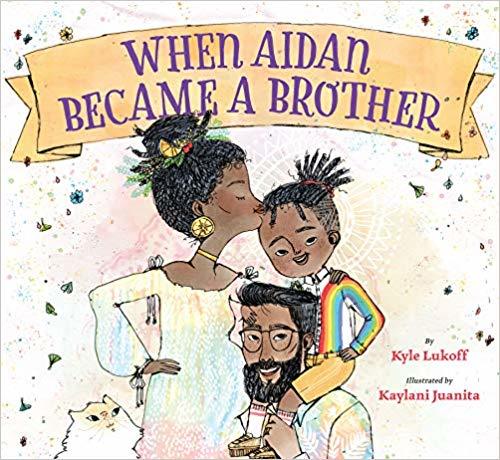

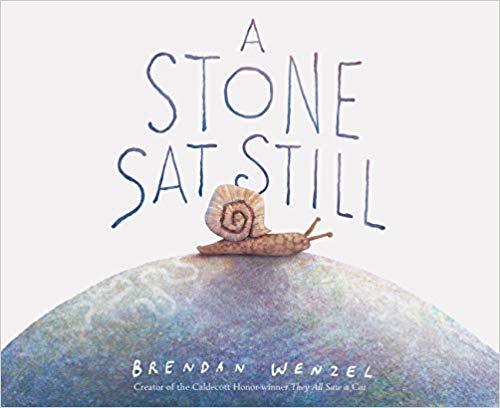
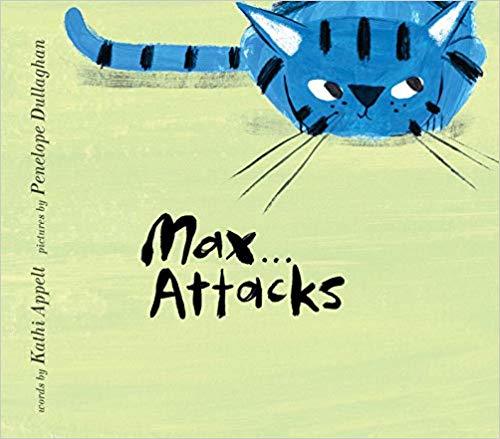
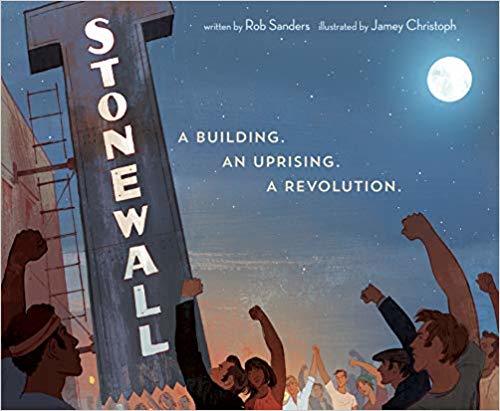
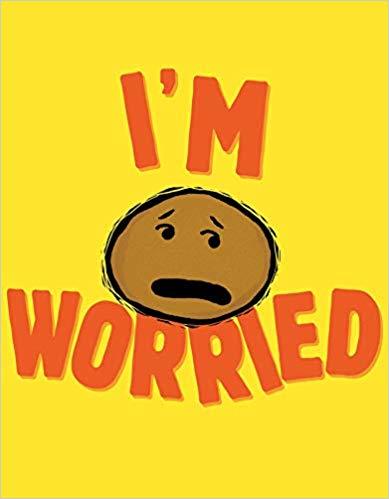
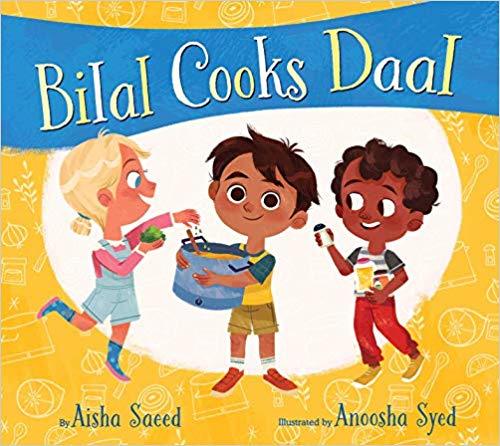
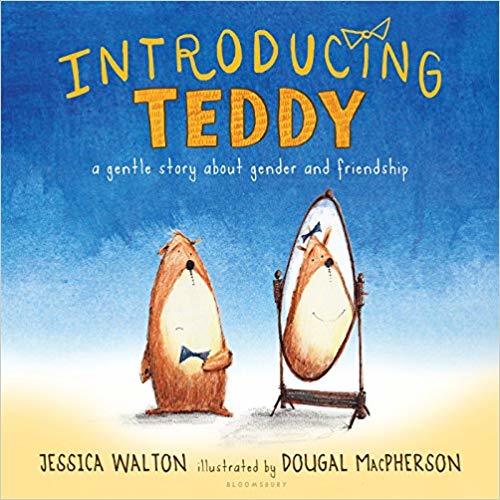

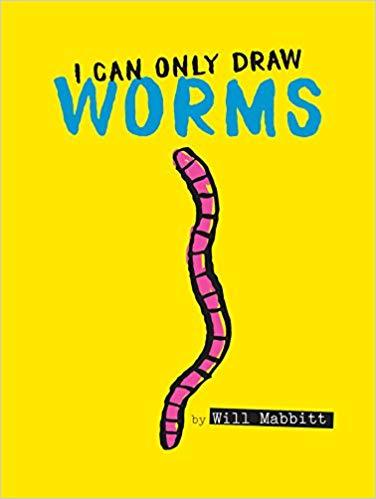
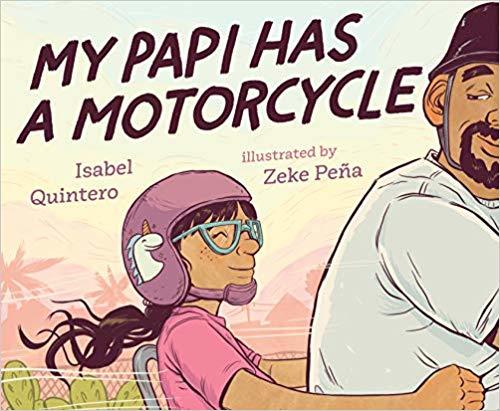
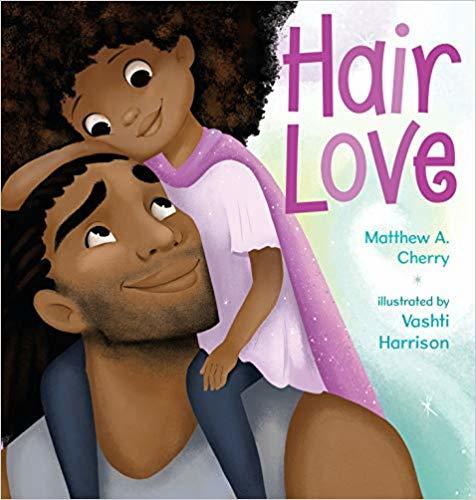

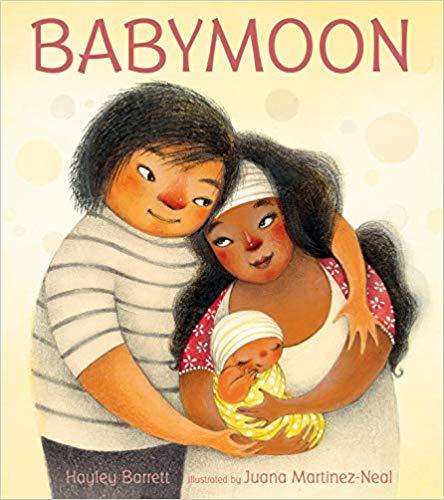
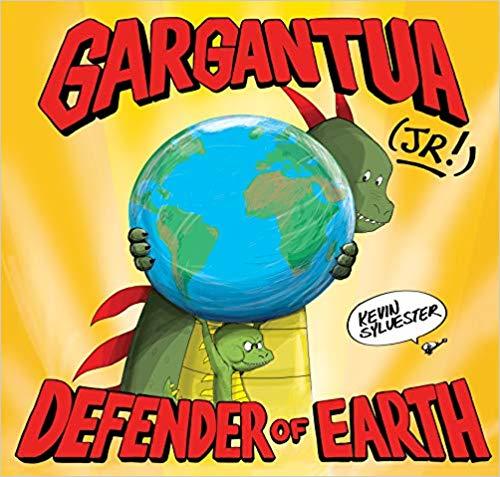
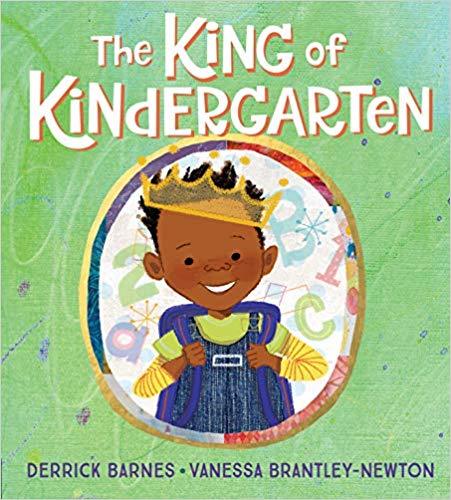
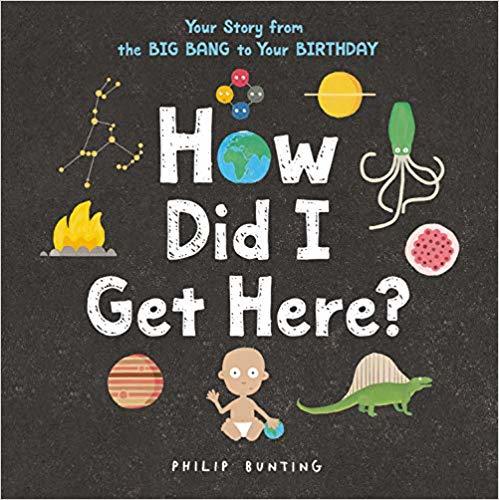
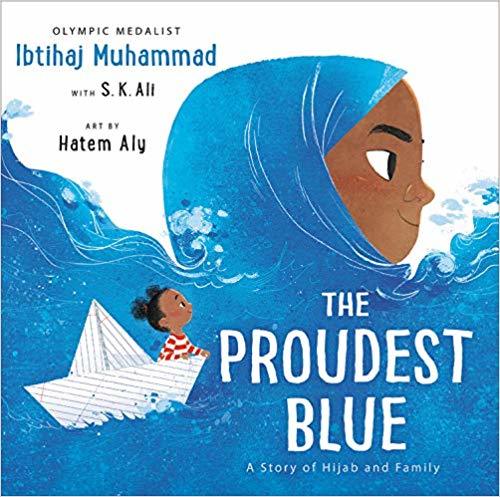
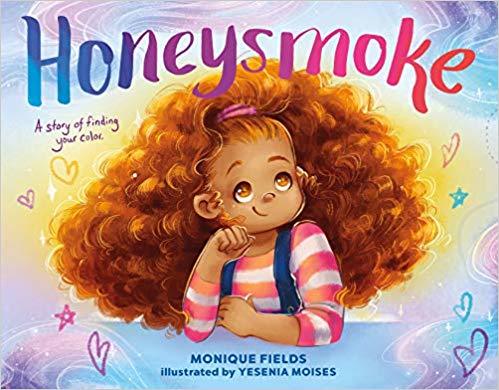

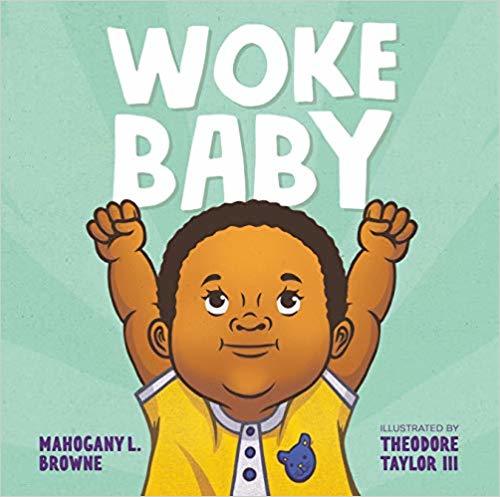
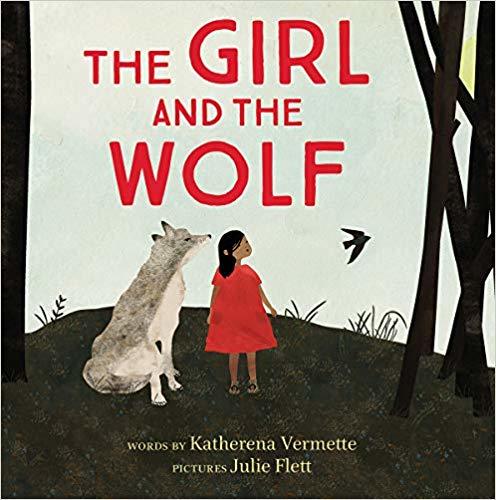

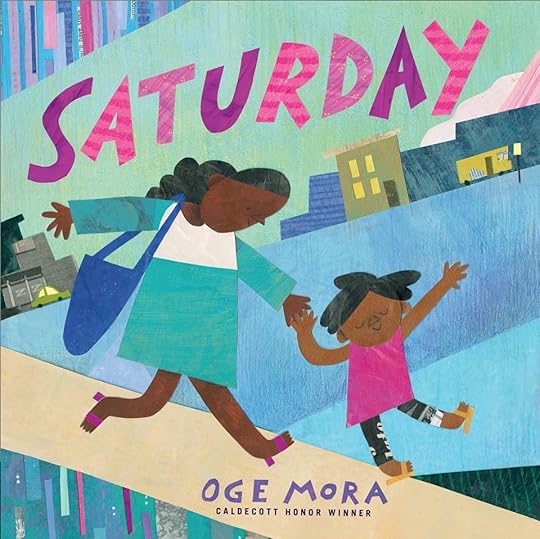
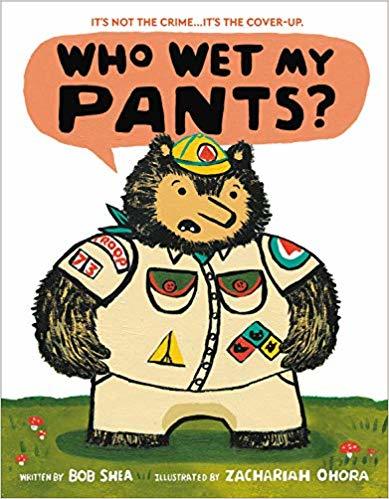

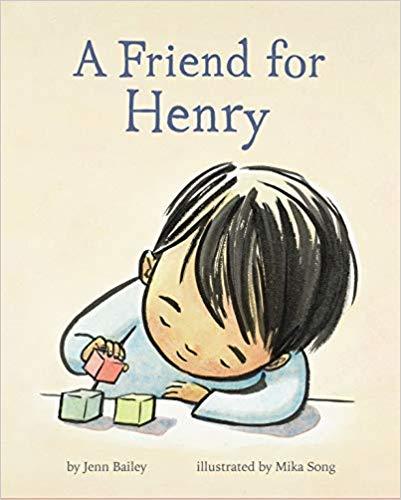
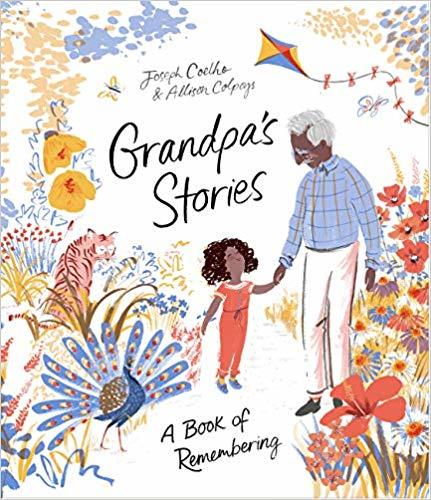



![The Bell Rang by [Ransome, James E.]](https://i.gr-assets.com/images/S/compressed.photo.goodreads.com/hostedimages/1560447799i/27664026.jpg)
Early Readers

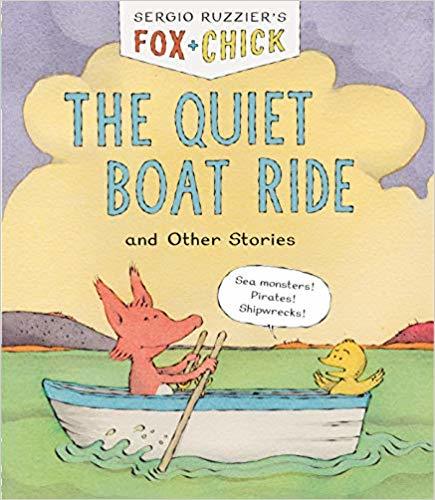 The Quiet Boat Ride and Other Stories by Sergio Ruzzier
The Quiet Boat Ride and Other Stories by Sergio RuzzierMiddle Grade
 The Okay Witch by Emma Steinkellner
The Okay Witch by Emma Steinkellner Count Me In by Varsha Bajaj
Count Me In by Varsha Bajaj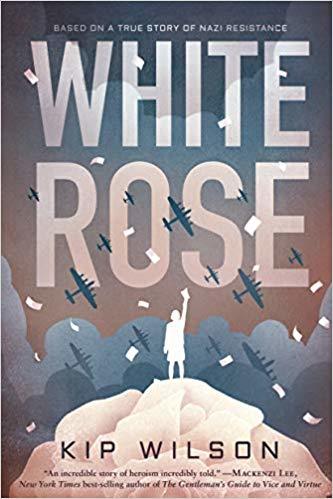 White Rose by Kip Wilson
White Rose by Kip Wilson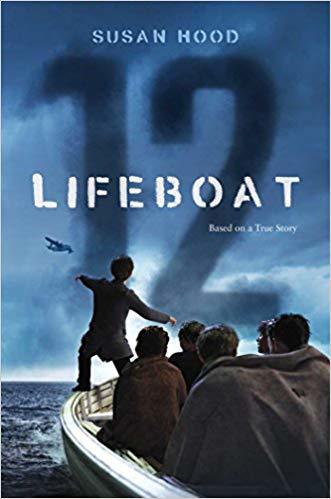 Lifeboat 12 by Susan Hood
Lifeboat 12 by Susan Hood The Paris Project by Donna Gephart
The Paris Project by Donna Gephart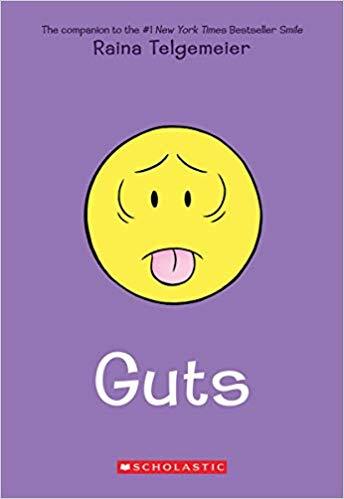 Guts by Raina Telgemeier
Guts by Raina Telgemeier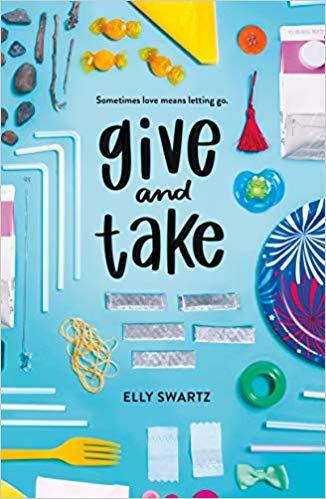 Give and Take by Elly Swartz
Give and Take by Elly Swartz My Jasper June by Laurel Snyder
My Jasper June by Laurel Snyder  The Miscalculations of Lightning Girl by Stacy McAnulty
The Miscalculations of Lightning Girl by Stacy McAnulty Illegal by Eion Colfer and Andrew Donkin
Illegal by Eion Colfer and Andrew Donkin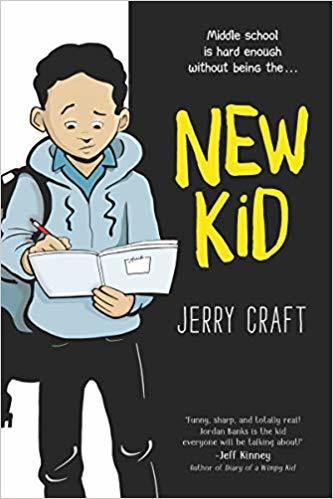 New Kid by Jerry Craft
New Kid by Jerry Craft Never Caught, The Story of Ona Judge: George and Martha Washington’s Courageous Slave Who Dared to Run Away by Erica Armstrong Dunbar and Kathleen Van Cleeve
Never Caught, The Story of Ona Judge: George and Martha Washington’s Courageous Slave Who Dared to Run Away by Erica Armstrong Dunbar and Kathleen Van Cleeve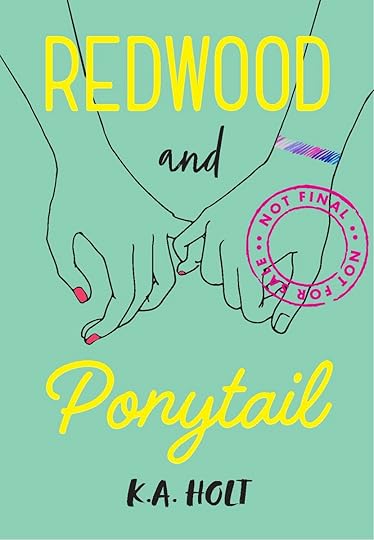 Redwood and Ponytail by KA Holt
Redwood and Ponytail by KA HoltYoung Adult
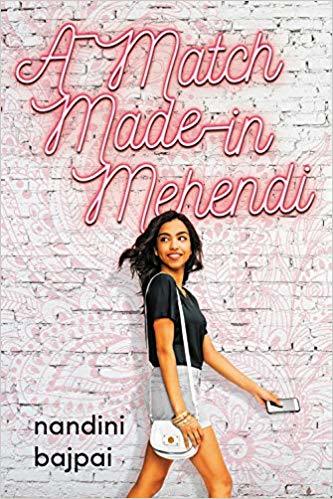 A Match Made in Mehendi by Nandini Bajpai
A Match Made in Mehendi by Nandini Bajpai This Mortal Coil series by Emily Suvada
This Mortal Coil series by Emily Suvada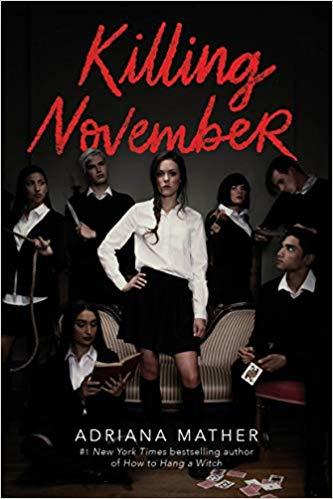 Killing November by Adriana Mather
Killing November by Adriana Mather Laura Dean Keeps Breaking Up With Me by Mariko Tamaki and Rosemary Valero-O’Connell
Laura Dean Keeps Breaking Up With Me by Mariko Tamaki and Rosemary Valero-O’Connell A Short History of the Girl Next Door by Jared Reck
A Short History of the Girl Next Door by Jared Reck With the Fire on High by Elizabeth Acevedo
With the Fire on High by Elizabeth Acevedo Pretend She’s Here by Luanne Rice
Pretend She’s Here by Luanne Rice Openly Straight by Bill Konigsberg
Openly Straight by Bill Konigsberg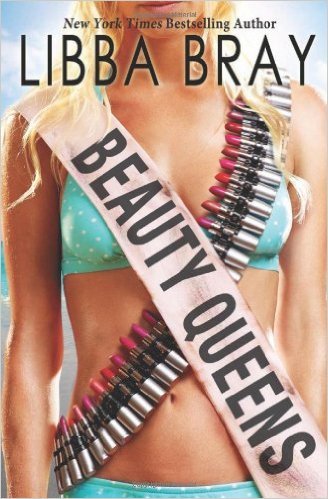

 Watch Us Rise by Renee Watson and Ellen Hagan
Watch Us Rise by Renee Watson and Ellen Hagan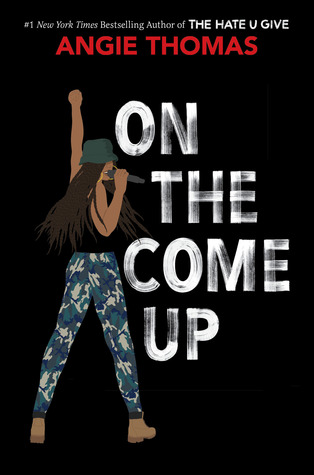 On the Come Up by Angie Thomas
On the Come Up by Angie Thomas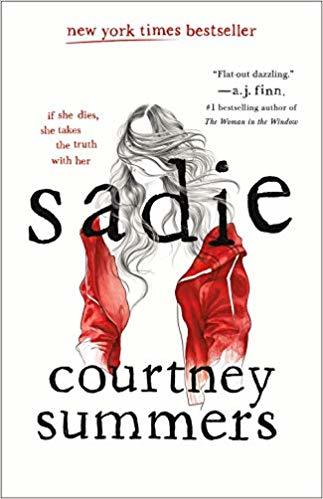 Sadie by Courtney Summers
Sadie by Courtney Summers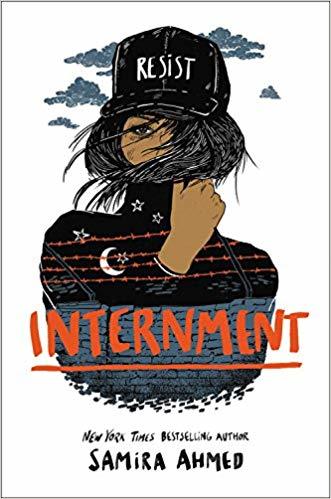 Internment by Samira Ahmed
Internment by Samira Ahmed The Nowhere Girls by Amy Reed
The Nowhere Girls by Amy Reed
Non-Fiction
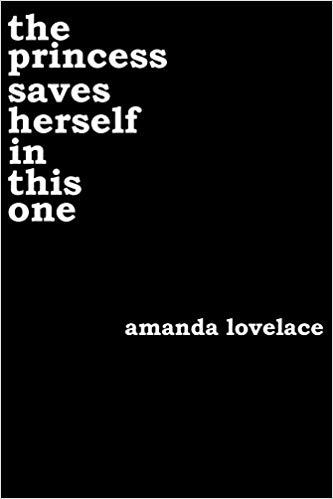 the princess saves herself in this one by Amanda Lovelace
the princess saves herself in this one by Amanda Lovelace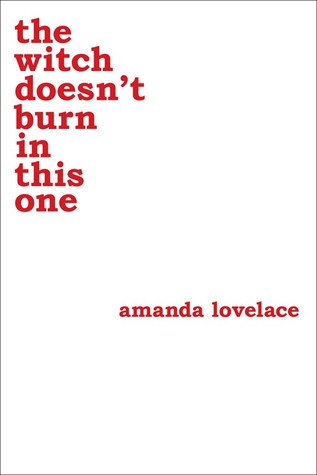 the witch doesn’t burn in this one by Amanda Lovelace
the witch doesn’t burn in this one by Amanda Lovelace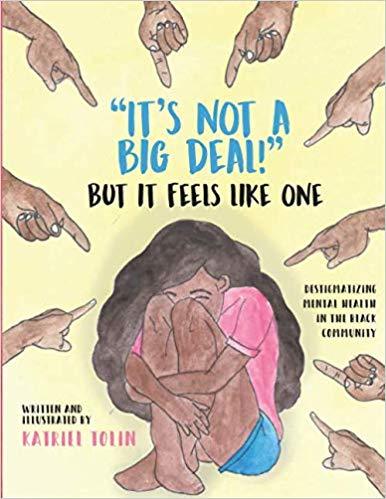 “It’s Not a Big Deal!” But It Feels Like One by Katriel Tolin
“It’s Not a Big Deal!” But It Feels Like One by Katriel Tolin Keep Going by Austin Kleon
Keep Going by Austin Kleon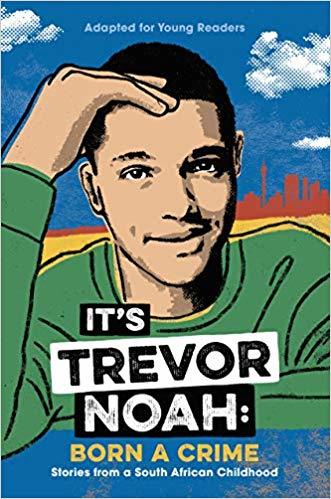 It’s Trevor Noah: Born a Crime by Trevor Noah
It’s Trevor Noah: Born a Crime by Trevor Noah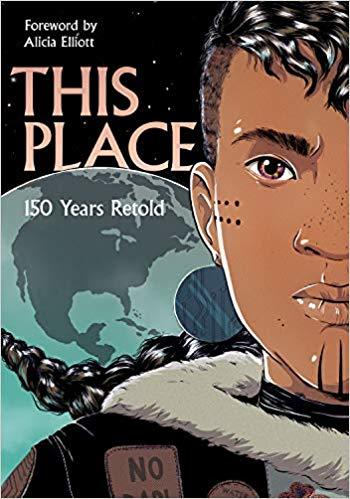 This Place: 150 Years Retold by a collection of authors and illustrators
This Place: 150 Years Retold by a collection of authors and illustrators Shout by Laurie Halse Anderson
Shout by Laurie Halse Anderson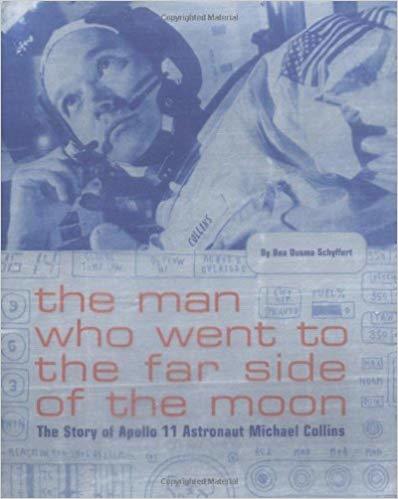 The Man Who Went to the Far Side of the Moon – The Story of Apollo 11 Astronaut Michael Collins by Bea Uusma Schyffert
The Man Who Went to the Far Side of the Moon – The Story of Apollo 11 Astronaut Michael Collins by Bea Uusma Schyffert Ordinary Hazards – A Memoir by Nikki Grimes
Ordinary Hazards – A Memoir by Nikki Grimes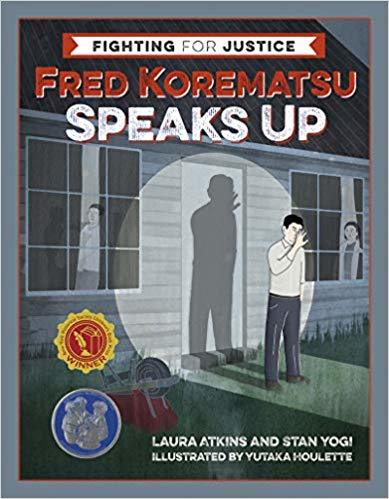 Fred Korematsu Speaks Up by Laura Atkins and Stan Yogi
Fred Korematsu Speaks Up by Laura Atkins and Stan Yogi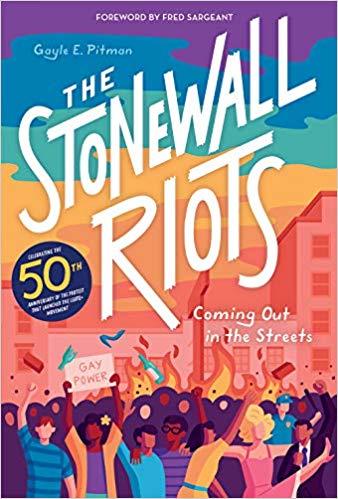 The Stonewall Riots: Coming Out in the Streets by Gayle E. Pitman
The Stonewall Riots: Coming Out in the Streets by Gayle E. Pitman Comprehensible and Compelling – The Cause and Effects of Free Voluntary Reading by Stephen D. Krashen, Sy-Ying Lee, and Christy Lao
Comprehensible and Compelling – The Cause and Effects of Free Voluntary Reading by Stephen D. Krashen, Sy-Ying Lee, and Christy Lao Why They Can’t Write by John Warner
Why They Can’t Write by John Warner



